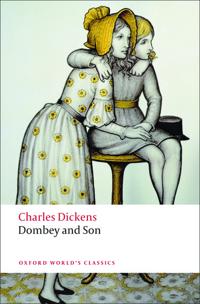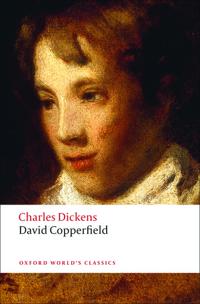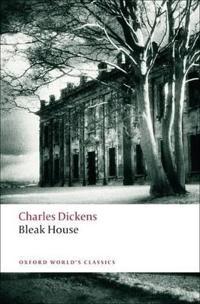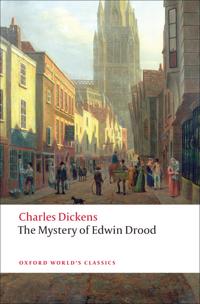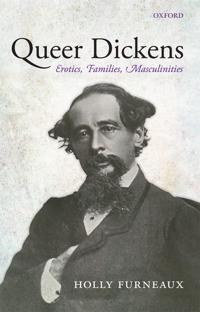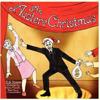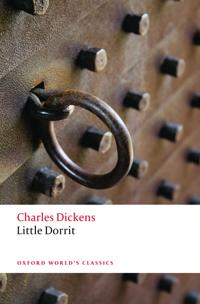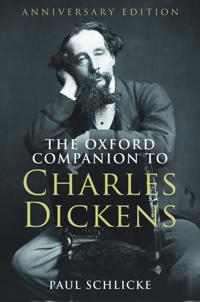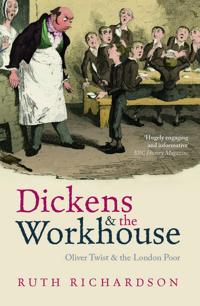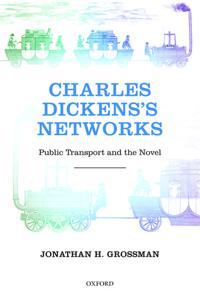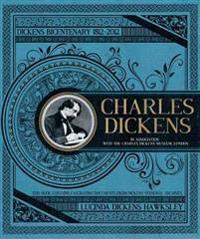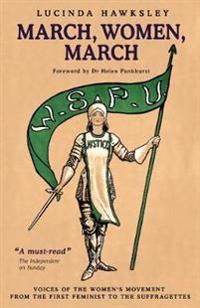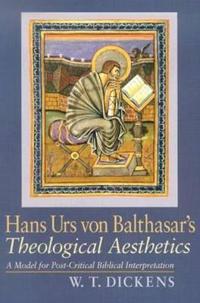Dombey and Son (Pocket)
avCharles Dickens, Alan Horsman, Dennis Walder
ISBN: 9780199536283 - UTGIVEN: 200807"Dom-bey and Son"...Those three words conveyed the one idea of Mr. Dombey's life. The earth was made for Dombey and Son to trade in, and the sun and moon were made to give them light. The hopes of Mr Dombey for the future of his shipping firm are centred on his delicate son Paul, and Florence, his [...]
David Copperfield (Pocket)
avCharles Dickens, Nina Burgis, Andrew Sanders
ISBN: 9780199536290 - UTGIVEN: 200807'I have in my heart of hearts a favourite child. And his name is DAVID COPPERFIELD,' wrote Dickens of what is the most personal, certainly one of the most popular, of all his novels. Dickens wrote the book after the completion of a fragment of autobiography recalling his employment as a child in a L[...]
Bleak House (Häftad)
avCharles Dickens
ISBN: 9780199536313 - UTGIVEN: 200805Bleak House, Dickens's most daring experiment in the narration of a complex plot, challenges the reader to make connections - -between the fashionable and the outcast, the beautiful and the ugly, the powerful and the victims. Nowhere in Dickens's later novels is his attack on an uncaring society mor[...]
The Old Curiosity Shop (Pocket)
avCharles Dickens
ISBN: 9780199538232 - UTGIVEN: 2009-04-15One of Dickens's most haunting and bizarre novels, The Old Curiosity Shop is the story of 'Little Nell' and her persecution by the grotesque and lecherous Quilp. This edition uses the Clarendon text, the definitive edition of the novels of Charles Dickens, and includes the original illustrations, fi[...]
The Mystery of Edwin Drood (Häftad)
avCharles Dickens
ISBN: 9780199554614 - UTGIVEN: 2009-03'Where is my nephew?, asked Mr Jasper, wildly. 'Where is your nephew?' repeated Neveille. 'Why do you ask me?' 'I ask you,' retorted Jasper, 'because you were the last person in his company, and he is not to be found.' The Mystery of Edwin Drood, Dickens's last novel, lay unfinished at his death. [...]
Authors In Context: Charles Dickens (Pocket)
avAndrew Sanders
ISBN: 9780199556090 - UTGIVEN: 2009-04-23Charles Dickens explores the work of the most popular author of his age in relation to the contradictory impulses of Victorian society, looking at the vital interconnection between his life and his art. His novels resonate well beyond his own age and continue to be recontextualized on the stage, on[...]
Queer Dickens
ISBN: 9780199566099 - UTGIVEN: 2010-02This book offers a radically new reading of Dickens and his major works. It demonstrates that, rather than representing a largely conventional, conservative view of sexuality and gender, he presents a distinctly queer corpus, everywhere fascinated by the diversity of gender roles, the expandability [...]
The Selected Letters of Charles Dickens (Inbunden)
avJenny (EDT) Hartley
ISBN: 9780199591411 - UTGIVEN: 2012-03What was it like to be Charles Dickens? His letters are the nearest we can get to a Dickens autobiography: vivid close-up snapshots of a life lived at maximum intensity. This is the first selection to be made from the magisterial twelve-volume British Academy Pilgrim Edition of his letters. From ove[...]
Little Dorrit (Pocket)
avCharles Dickens, Harvey Peter Sucksmith, Dennis Walder
ISBN: 9780199596485 - UTGIVEN: 201207'Clennam rose softly, opened and closed the door without a sound, and passed from the prison, carrying the quiet with him into the turbulent streets.' Introspective and dreamy, Arthur Clennam returns to England from many years abroad to find a people gripped in their self-made social and mental pris[...]
Sketches Of Young Gentlemen And Young Couples (Inbunden)
avCharles Dickens
ISBN: 9780199603282 - UTGIVEN: 2011-11-10The Oxford Companion to Charles Dickens (Inbunden)
avPaul (EDT) Schlicke, Simon (FRW) Callow, Paul (EDT) Schlicke
ISBN: 9780199640188 - UTGIVEN: 2011-01Reissued to celebrate the bicentenary of Charles Dickens's birth, The Oxford Companion to Charles Dickens (formerly The Oxford Reader's Companion to Dickens) draws together an unparalleled diversity of information on one of Britain's greatest writers: covering his life, his works, his reputation, an[...]
Dickens And The Workhouse (Inbunden)
avRuth Richardson
ISBN: 9780199645886 - UTGIVEN: 2012-02-02The story of the recently discovered London workhouse that Charles Dickens lived almost next door to in the years before he wrote Oliver Twist - told by the historian who did the sleuthing behind these exciting new findings.[...]
Dickens And Mass Culture (Pocket)
avJuliet John
ISBN: 9780199675104 - UTGIVEN: 2013-08-26Dickens and Mass Culture shows that Dickens's unusual success in combining literary with wider popular appeal is directly related to his sense of himself as a mass cultural artist. It examines the ways in which his consciousness of a mass market for his work affected both his cultural vision and pra[...]
Queer Dickens (Pocket)
avHolly Furneaux
ISBN: 9780199680726 - UTGIVEN: 2013-08-21This book offers a radically new reading of Dickens, arguing that the Dickens corpus is distinctly queer, displaying a fascination with the diversity of gender roles, the expandability of notions of the family, and the multiplicity of sexual desire.[...]
Dickens and the Workhouse (Häftad)
avRuth Richardson
ISBN: 9780199681280 - UTGIVEN: 2013-11The recent discovery that as a young man Charles Dickens lived only a few doors from a major London workhouse made headlines worldwide, and the campaign to save the workhouse from demolition caught the public imagination. Internationally, the media immediately grasped the idea that Oliver Twist's wo[...]
Charles Dickens's Networks
ISBN: 9780199682164 - UTGIVEN: 2013-12The same week in February 1836 that Charles Dickens was hired to write his first novel, The Pickwick Papers, the first railway line in London opened. Charles Dickens's Networks explores the rise of the global, high-speed passenger transport network in the nineteenth century and the indelible impact [...]
Commissioned Spirits: The Shaping of Social Movement in Dickens, Carlyle, Melville, and Hawthorne (Övrig)
avJonathan Arac
ISBN: 9780231071161 - UTGIVEN: 1989-11-24Commissioned Spirits: The Shaping of Social Movement in Dickens, Carlyle, Melville, and Hawthorne (Övrig)
avJonathan Arac
ISBN: 9780231071178 - UTGIVEN: 1989-11-24Reaches of Empire: The English Novel from Edgeworth to Dickens (Inbunden)
avSuvendrini Perera
ISBN: 9780231075787 - UTGIVEN: 1991-12-09In the Company of Strangers: Family and Narrative in Dickens, Conan Doyle, Joyce, and Proust (Övrig)
avBarry Mccrea
ISBN: 9780231157629 - UTGIVEN: 2011-05-13In the Company of Strangers shows how a reconception of family and kinship underlies the revolutionary experiments of the modernist novel. While stories of marriage and long-lost relatives were a mainstay of classic Victorian fiction, Barry McCrea suggests that rival countercurrents within these fam[...]
In the Company of Strangers: Family and Narrative in Dickens, Conan Doyle, Joyce, and Proust (Övrig)
avBarry Mccrea
ISBN: 9780231157636 - UTGIVEN: 2011-05-13In the Company of Strangers shows how a reconception of family and kinship underlies the revolutionary experiments of the modernist novel. While stories of marriage and long-lost relatives were a mainstay of classic Victorian fiction, Barry McCrea suggests that rival countercurrents within these fam[...]
Charles Dickens
ISBN: 9780233003290 - UTGIVEN: 2011-12Charles Dickens is the definitive illustrated guide to the man and his works. It follows Dickens from early childhood, including his time spent as a child labourer, and looks at how he became the greatest celebrity of his age - and how he still remains recognized as one of England's greatest celebri[...]
March, Women, March (Pocket)
avLucinda Dickens Hawksley
ISBN: 9780233004457 - UTGIVEN: 2015-01Voices of the Women's Movement explores the women's movement in Britain, from the passing of the Marriage and Divorce Act in 1857 to women attaining the vote in 1928. Published to commemorate the centenary of the death of the suffragette Emily Wilding Davison, who threw herself under King George V's[...]
Hans Urs Von Balthasar's Theological Aesthetics (Pocket)
avWilliam T. Dickens
ISBN: 9780268030643 - UTGIVEN: 2003-11Critically assessing Balthasar's interpretation of scripture in "The Glory of the Lord: A Theological Aesthetics", Dickens demonstrates the extent to which his approach to scripture abides by certain pre-modern interpretive conventions.[...]

